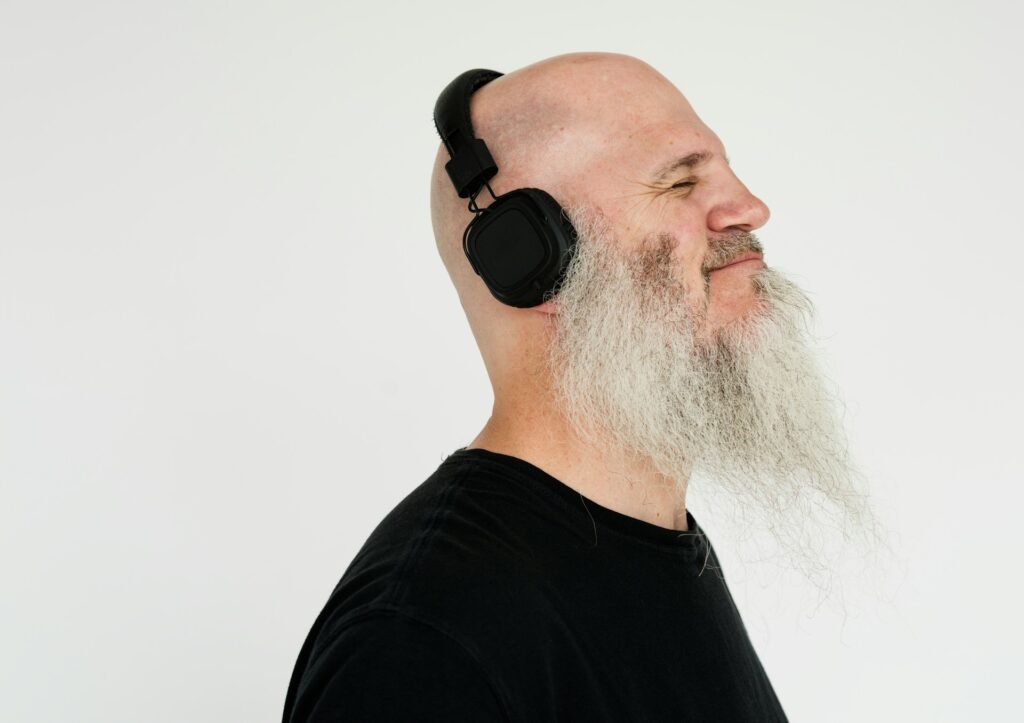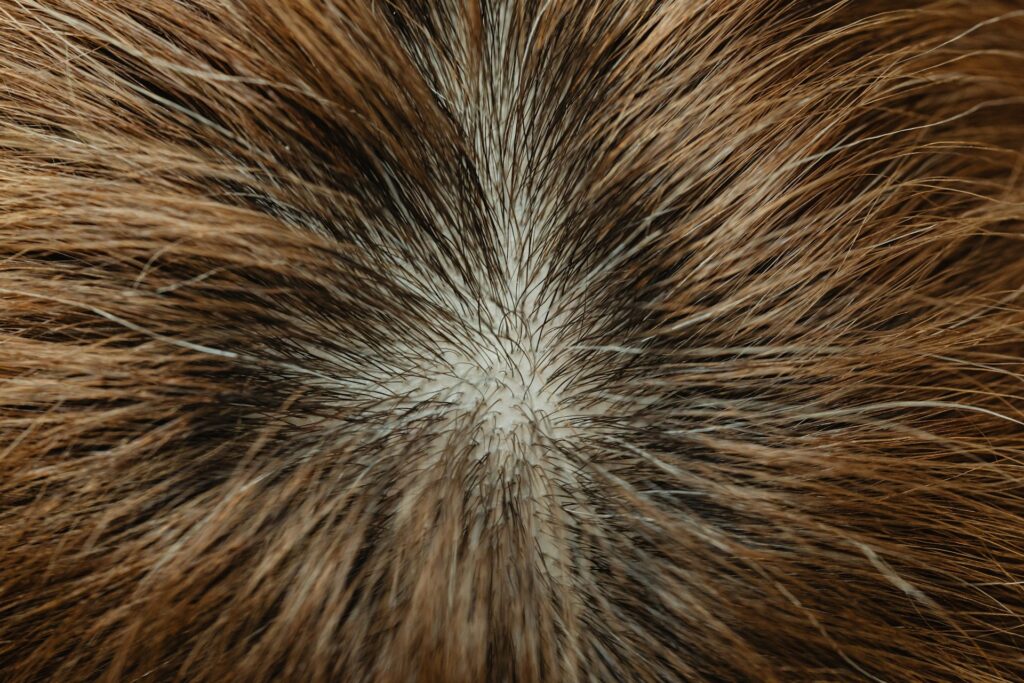Hair loss is a common issue affecting both men and women. While surgical options like hair transplants offer permanent results, not everyone is ready or willing to undergo surgery.
Fortunately, several non-surgical hair replacement options can help restore hair appearance and confidence.
This guide explores the top non-surgical hair replacement methods, how they work, and their benefits in hair restoration. This will allow you to make an informed decision on the best option for you.
And, of course, make sure to set up a consultation with our team at Morph Wellness MD for even more detailed information about the best path for you and achieving thicker and healthier hair.

Understanding Hair Loss
Before exploring non-surgical solutions, it’s essential to understand the causes of hair loss, including male pattern hair loss. Hair loss can occur due to various factors, including genetics, hormonal imbalances, stress, and certain medical conditions.
Male Pattern Baldness and Hair Follicles
Male pattern baldness (MPB) is a prevalent condition that affects millions of men globally. Characterized by the gradual thinning and eventual loss of hair on the scalp, MPB typically targets the top and crown areas. The primary culprit behind MPB is the conversion of testosterone into dihydrotestosterone (DHT), a hormone that causes hair follicles to shrink, leading to hair loss.
Hair follicles are tiny structures embedded in the scalp, responsible for producing hair. Each follicle comprises a cluster of cells working in unison to generate a single hair shaft. Unfortunately, hair follicles are highly sensitive to DHT, which is why MPB often results in significant hair loss. However, several treatments can help slow down or even halt this process.
Medications like Finasteride, low-level laser therapy (LLLT), and platelet-rich plasma (PRP) therapy are effective options that can stimulate hair follicles and promote hair growth.
Causes of Hair Loss
- Genetics: Male pattern baldness (MPB) and female pattern baldness (FPB) are hereditary conditions that cause hair thinning and loss, typically at the crown and temples.
- Hormonal Imbalances: Changes in hormone levels due to pregnancy, menopause, or conditions like thyroid disease can lead to hair loss.
- Medical Conditions: Conditions such as alopecia areata, scalp infections, and autoimmune disorders can cause hair thinning or complete baldness.
- Lifestyle Factors: Poor nutrition, stress, and certain medications can also trigger hair loss.
For those looking to avoid surgery, non-surgical hair replacement options provide an effective way to address hair loss without going under the knife.
Importance of Hair Growth for Hair Replacement
Hair growth is a cornerstone of successful hair replacement, as it enables the creation of a natural-looking hairline and fills in balding areas. Achieving hair growth can be accomplished through various treatments, including medications, low-level laser therapy (LLLT), and PRP therapy.
These treatments work by stimulating hair follicles, enhancing blood flow to the scalp, and encouraging the growth of new hair.
Hair replacement systems, such as hairpieces and wigs, offer an alternative solution by covering up balding areas. While these systems can provide immediate results, they require regular maintenance and may not deliver the same natural-looking hair growth as other treatments.
Therefore, promoting hair growth through effective therapies is essential for achieving a more permanent and natural appearance.

Non-Surgical Hair Replacement Options
Non-surgical hair replacement solutions are ideal for individuals seeking less invasive treatments with minimal downtime. These options range from medications to advanced therapies that promote hair growth.
Medications for Hair Loss
Two commonly prescribed medications for hair loss are Finasteride and Minoxidil. These medications can help slow down or reverse hair loss.
Finasteride
- How it Works: Finasteride works by reducing levels of dihydrotestosterone (DHT), a hormone linked to hair loss. By lowering DHT levels, it helps prevent hair follicles from shrinking and promotes hair growth.
- Effectiveness: Finasteride has been shown to be highly effective in treating male pattern baldness, but it is not typically recommended for women.
- Usage: Taken orally, Finasteride must be used consistently for several months to see results.
Dutasteride
Dutasteride is a potent medication used to treat male pattern baldness. It functions by inhibiting the activity of 5-alpha reductase, an enzyme responsible for converting testosterone into DHT. By reducing DHT levels, Dutasteride helps to slow down hair loss and promote hair growth.
Available by prescription only, Dutasteride is typically taken orally. It may take several months to observe noticeable results, and it may not be suitable for everyone.
However, numerous studies have demonstrated its effectiveness in promoting hair growth and reducing hair loss in many men, making it a valuable option for those struggling with male pattern baldness.
Minoxidil
- How it Works: Minoxidil is a topical solution applied directly to the scalp. It widens blood vessels, improving blood flow to hair follicles and prolonging the growth phase of hair.
- Effectiveness: Minoxidil is effective for both men and women and is particularly useful for early-stage hair loss.
- Usage: Applied twice daily, Minoxidil requires long-term use to maintain hair growth.
Low-Level Laser Therapy for Hair Growth
Low-level laser therapy (LLLT) is another non-invasive option for promoting hair growth. This treatment uses red light therapy to stimulate hair follicles and encourage hair regrowth.
How LLLT Works
- Photons from low-level lasers penetrate the scalp and stimulate weak hair follicles, prompting them to regrow hair.
- LLLT improves blood circulation in the scalp, delivering oxygen and nutrients that nourish hair follicles.
Benefits of LLLT
- Non-invasive: LLLT requires no surgery or downtime, making it a convenient treatment option.
- Safe: LLLT has no significant side effects, and treatments are quick, typically lasting 30 minutes.
- Effective: This therapy is most effective in individuals with mild to moderate hair thinning, as it works best when some active follicles are still present.

Platelet-Rich Plasma (PRP) Therapy
PRP therapy is a regenerative treatment that uses the body’s own blood platelets to stimulate hair growth. PRP therapy is gaining popularity as a treatment for hair loss due to its ability to promote healing and tissue regeneration.
How PRP Therapy Works
- The process begins by drawing a small amount of the patient’s blood, which is then placed in a centrifuge to separate the platelet-rich plasma from the rest of the blood components.
- The concentrated plasma, rich in growth factors, is then injected into areas of the scalp experiencing hair loss.
Benefits of PRP Therapy
- Natural: PRP therapy uses the body’s own plasma, reducing the risk of adverse reactions.
- Minimal Downtime: PRP therapy is non-invasive, with minimal recovery time.
- Effective: PRP therapy can help improve hair density and slow down hair loss in individuals with conditions like androgenetic alopecia.
Scalp Micropigmentation (SMP)
Scalp micropigmentation (SMP) is a cosmetic procedure that creates the illusion of fuller hair by using tiny hairlike tattoos on the scalp. While it does not promote hair growth, it can help create the appearance of thicker hair in areas where thinning has occurred.
How SMP Works
- Pigments are applied to the scalp using tiny needles, mimicking the appearance of hair follicles. The result is a fuller, more even-looking hairline.
- SMP is particularly effective for individuals with thinning hair or shaved heads, as it enhances the appearance of hair density.
Benefits of SMP
- Immediate Results: Unlike other treatments that take months to show results, SMP provides an immediate improvement in appearance.
- Non-invasive: SMP is a non-surgical procedure with minimal discomfort and no downtime.
- Long-lasting: Results can last several years with proper care and maintenance.
Hair Replacement Systems
For those looking for a quick and effective way to restore the appearance of a full head of hair, a hair replacement system provides a non-surgical alternative. These systems, also known as hairpieces or wigs, offer natural-looking results when tailored to the individual’s hair type and color.
Types of Hair Replacement Systems
- Custom Hair Systems: Custom hair systems are made to match the individual’s hair color, texture, and density, providing a realistic appearance and can be worn daily.
- Ready-Made Hairpieces: While not as personalized, ready-made hairpieces are available in various styles and colors, offering a more affordable option.
Benefits of Hair Replacement Systems
- Non-invasive: Hair replacement systems are non-surgical and offer an immediate solution to hair loss.
- Versatile: Hairpieces can be styled, colored, and maintained like natural hair.
- Customizable: Custom hairpieces provide a personalized fit, ensuring comfort and a natural appearance.
Cellular Hair Loss Therapies: CRP and Stem Cell Treatment
Cellular hair loss therapies, such as cytokine-rich plasma (CRP) and stem cell treatment, represent cutting-edge approaches that utilize the body’s own cells to stimulate hair growth.
CRP therapy involves processing the patient’s blood to create a serum rich in growth factors, which is then injected into the scalp to promote hair health and growth. This treatment is significantly more potent than traditional PRP therapy, offering superior results in a shorter timeframe.
Stem cell treatment, on the other hand, uses the patient’s own cells to create a serum that enhances hair growth and density. Patients who undergo stem cell treatment often report substantial improvements, with some experiencing up to a 34% increase in hair density within 23 weeks.
These innovative therapies offer promising solutions for individuals seeking to combat hair loss and achieve fuller, healthier hair.
Hair Thickening Products
Hair thickening products, such as Toppik, Couvre, and DermMatch, offer a temporary solution to hair thinning by adding volume and reducing the contrast between the scalp and hair. These products are applied directly to the hair and scalp, giving the appearance of thicker, fuller hair.
Benefits of Hair Thickening Products
- Instant Results: These products offer an immediate improvement in hair appearance.
- Easy Application: Hair thickening fibers and powders can be applied at home without the need for professional assistance.
- Cost-effective: Compared to other hair loss treatments, thickening products are an affordable option.




